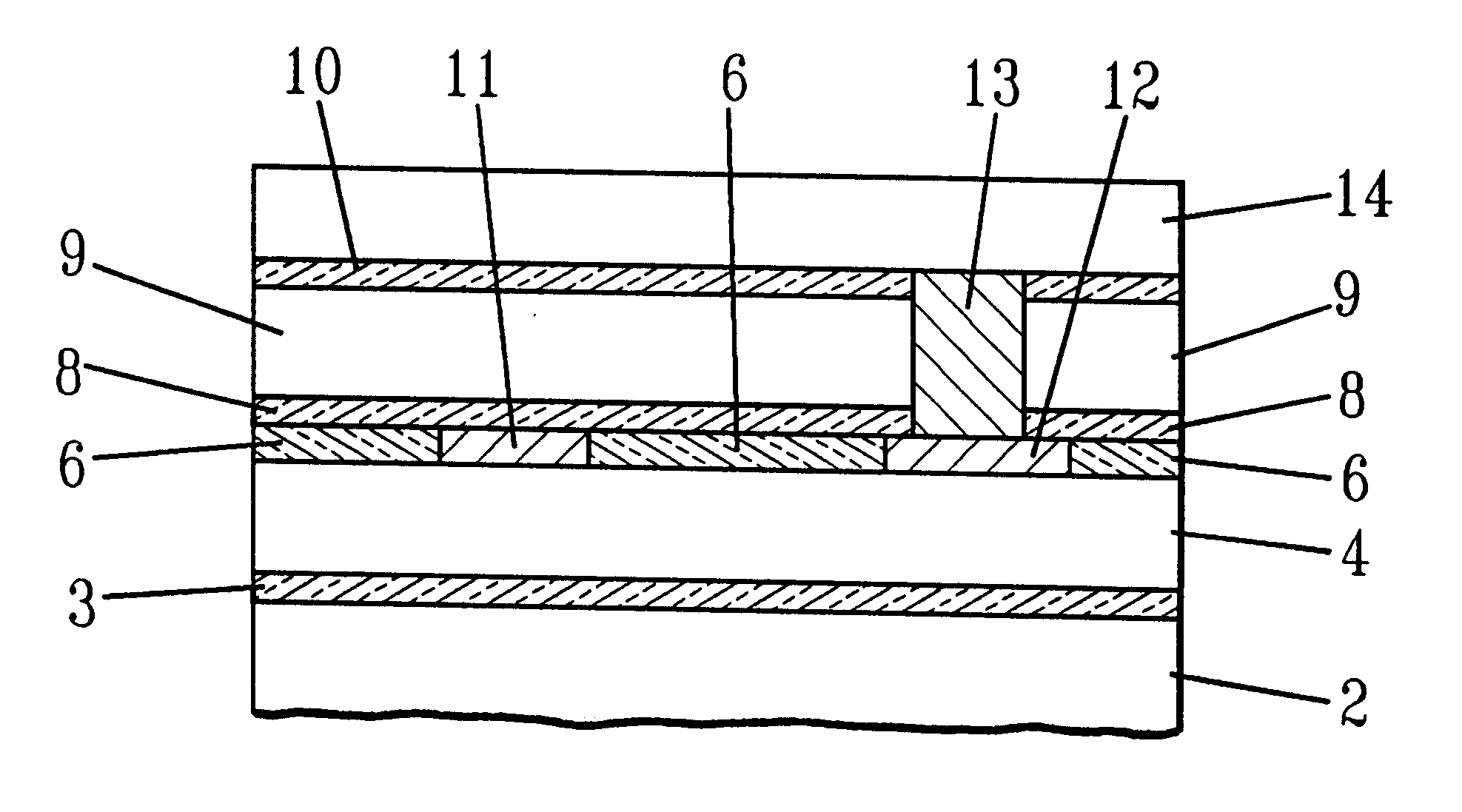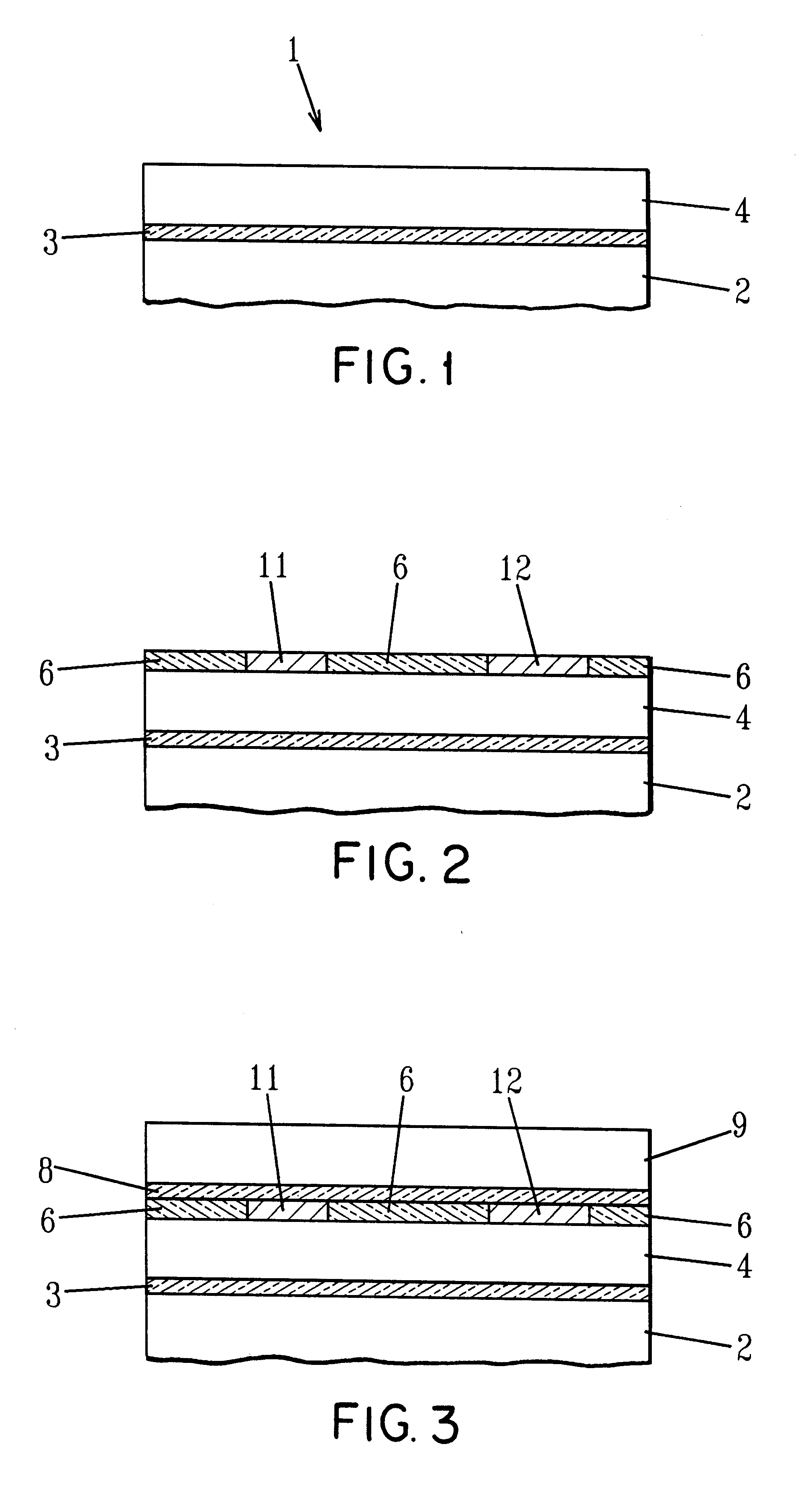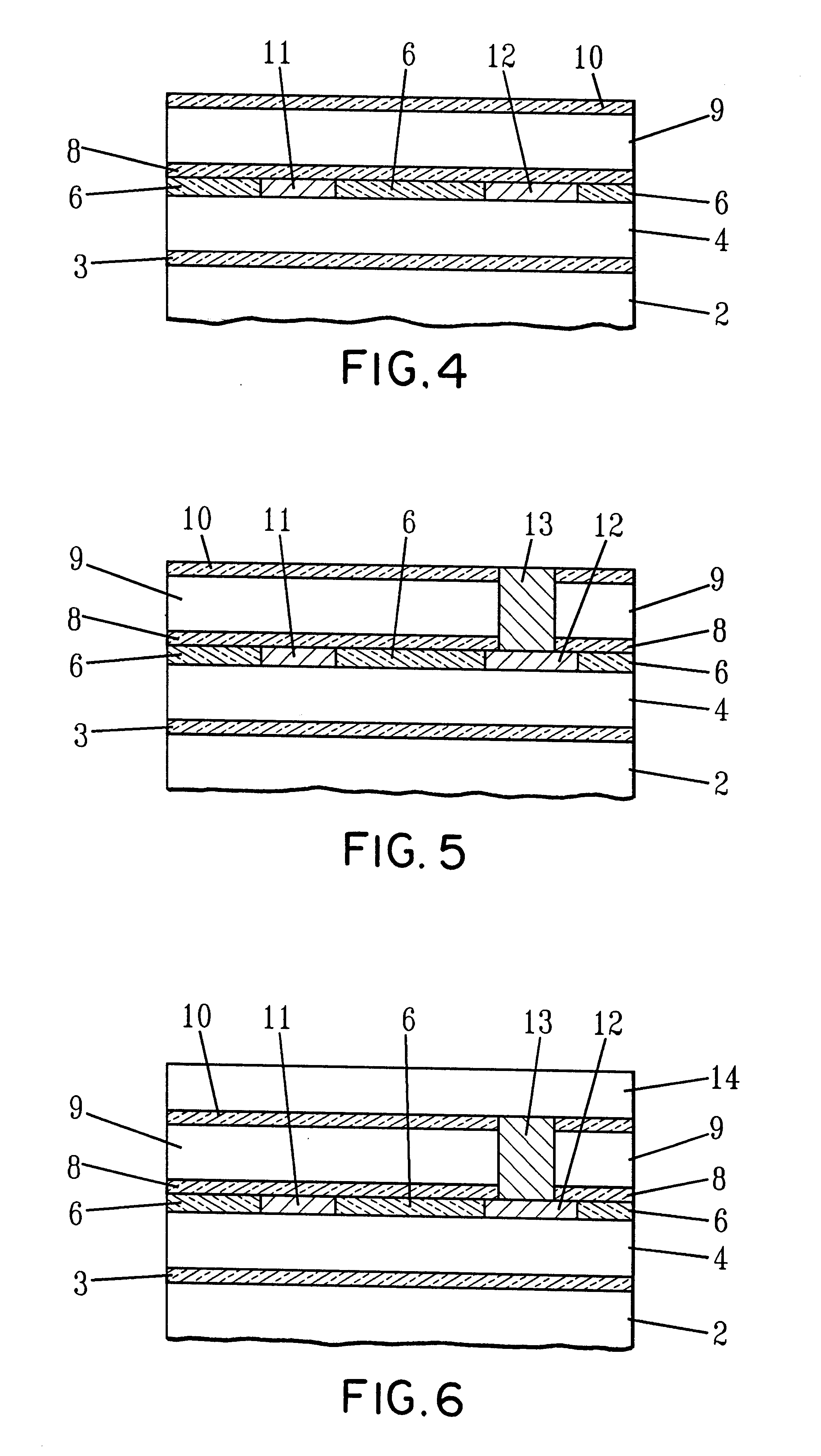Multistack 3-dimensional high density semiconductor device and method for fabrication
a semiconductor device and multi-layer technology, applied in semiconductor devices, semiconductor/solid-state device details, electrical apparatus, etc., can solve the problems of power consumption, limited integration that can be achieved on semiconductor chips, and limited performance of a system which is realized using planar technology and comprises a plurality of chips connected to one another, so as to improve the function, density and performance of the device.
- Summary
- Abstract
- Description
- Claims
- Application Information
AI Technical Summary
Benefits of technology
Problems solved by technology
Method used
Image
Examples
Embodiment Construction
In order to facilitate an understanding of the present invention, reference may be made to the figures which illustrate a diagrammatic representation of the steps of an embodiment according to the present invention.
According to the present invention, a first semiconductor substrate 1 is provided. The semiconductor substrate is typically monocrystalline silicon or a SOI substrate (silicon on insulator substrate) as illustrated in FIG. 1. The SOI substrate comprises a silicon wafer 2 and an insulating layer 3 provided thereon. The insulating layer 3 can be grown on the substrate 2 or can be provided by deposition techniques such as chemical vapor deposition (CVD) or physical vapor deposition (PVD). Also, the insulating layer 3 can be provided by thermal oxidation of the substrate 2 to provide a silicon dioxide or insulating layer 3 can be provided by SIMOX or other well known methods of making SOI. Typically, this layer 3 is about 1000 to about 5000 .ANG. thick and preferably about 15...
PUM
 Login to View More
Login to View More Abstract
Description
Claims
Application Information
 Login to View More
Login to View More - R&D
- Intellectual Property
- Life Sciences
- Materials
- Tech Scout
- Unparalleled Data Quality
- Higher Quality Content
- 60% Fewer Hallucinations
Browse by: Latest US Patents, China's latest patents, Technical Efficacy Thesaurus, Application Domain, Technology Topic, Popular Technical Reports.
© 2025 PatSnap. All rights reserved.Legal|Privacy policy|Modern Slavery Act Transparency Statement|Sitemap|About US| Contact US: help@patsnap.com



